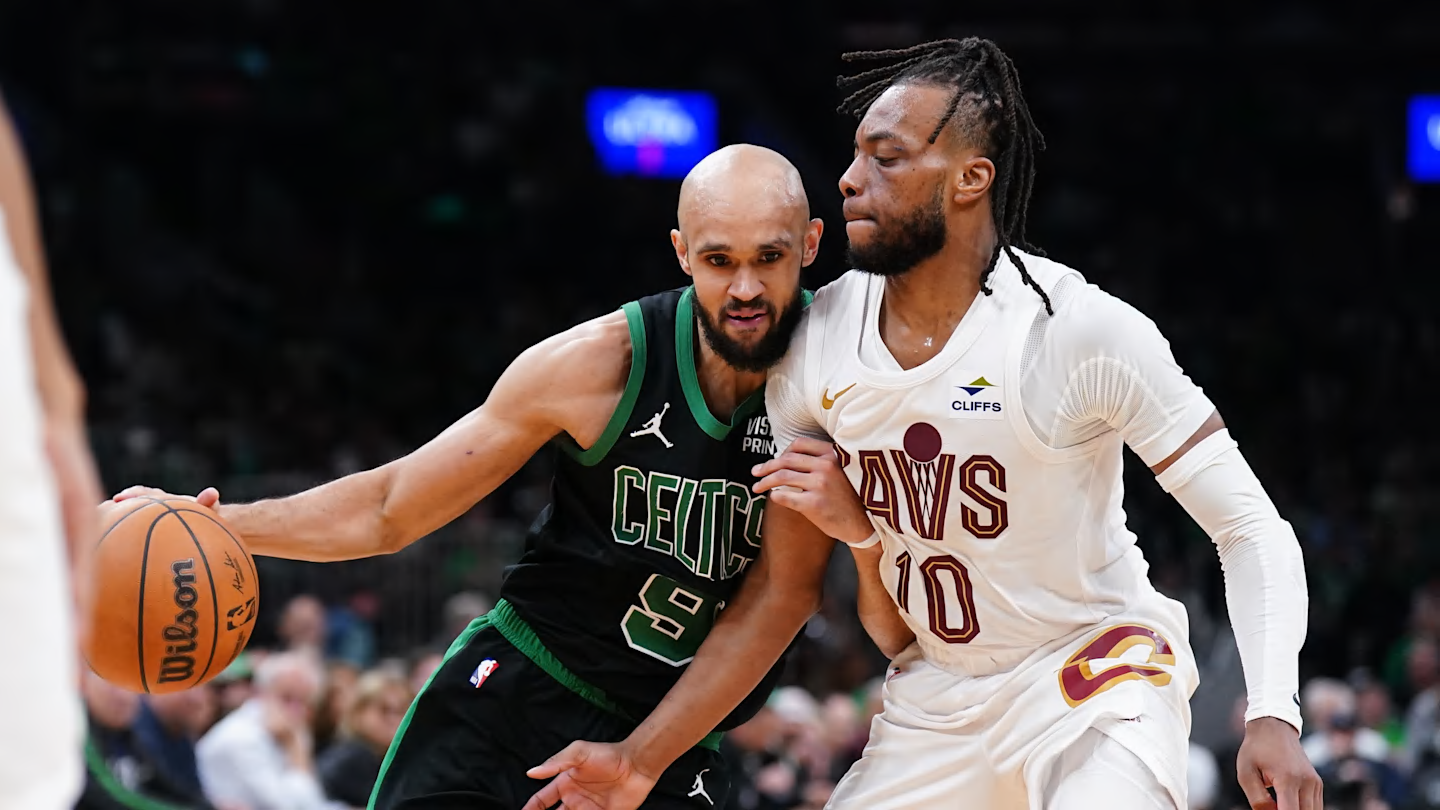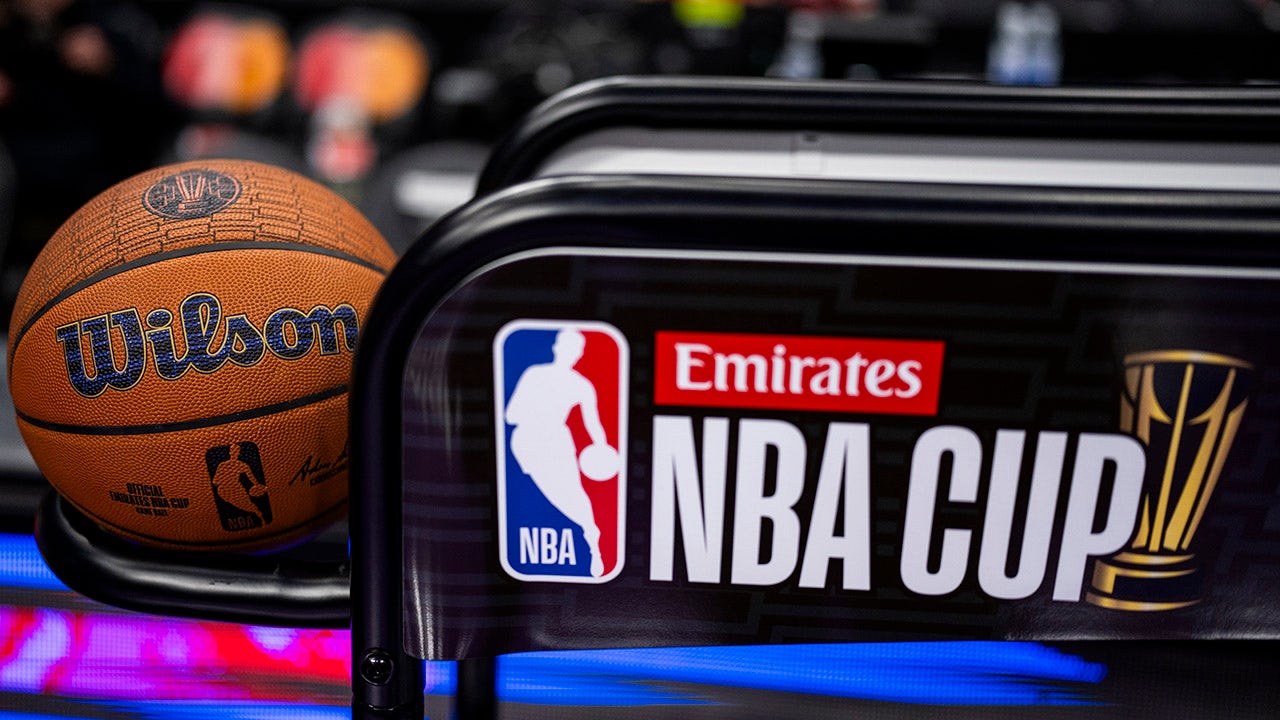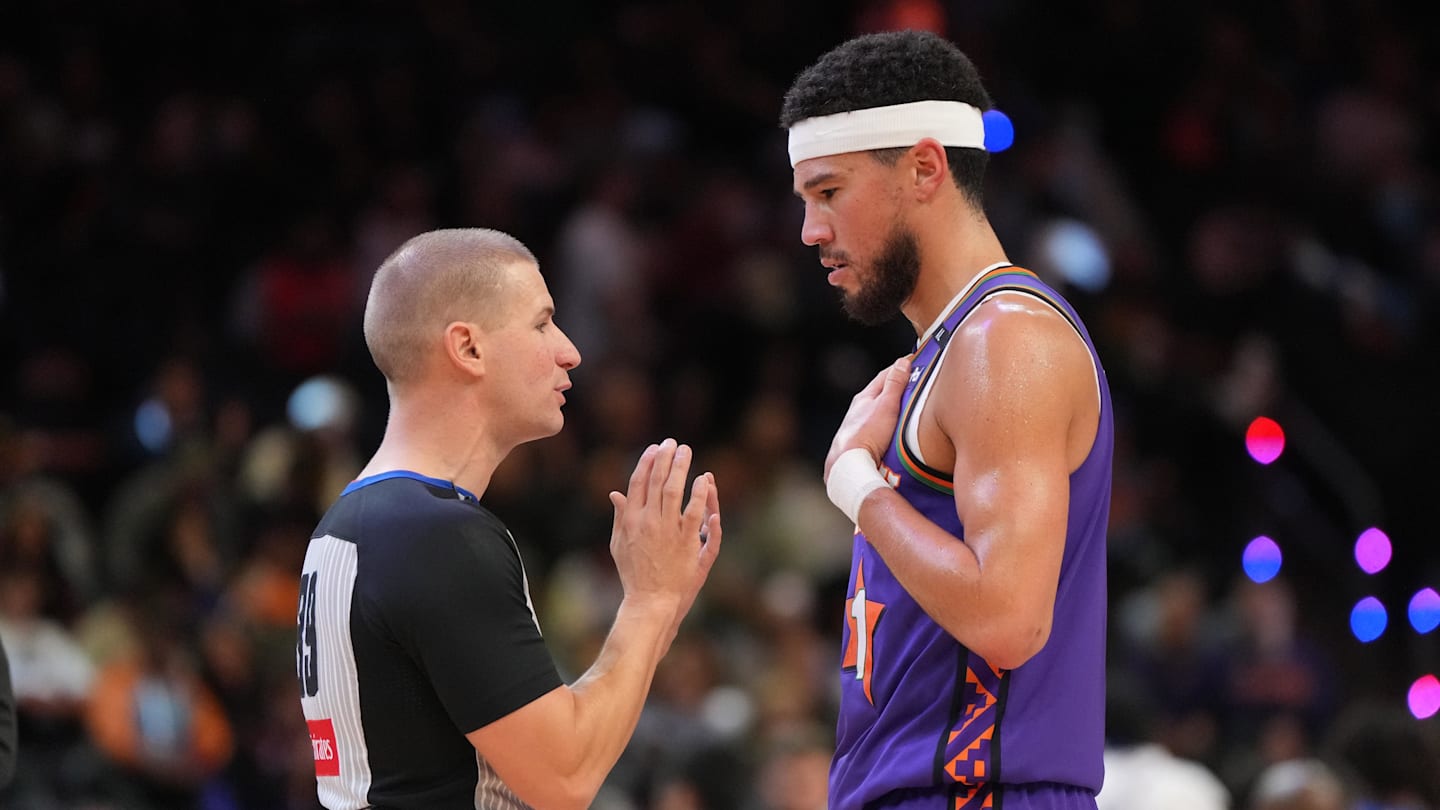Exclusive: Designer Victor Solomon Breaks Down His Brooklyn Nets NBA Cup Court Design

When the NBA Cup comes to town, you know it. The court tells you — and Adam Silver wants it to be this way.
The NBA commissioner had the thought to do something “unique” when the league was introducing its in-season tournament last year, so that if one was at a crowded bar and only caught a glimpse of the TV, they’d know it was an NBA Cup game. So that an iconic photograph from the competition could be easily identified years later. So that each contest stood out and wasn’t just another night of the regular season.
To accomplish that this year, the NBA invited artist Victor Solomon to creatively direct this iteration of the Cup’s courts. Nets On SI spoke with Solomon ahead of the Brooklyn Nets’ first home game in the NBA Cup on Tuesday night, in which Barclays Center will don the floor he designed.
“When you think about it, the court is such a blank slate and such a giant surface,” Solomon said. “It has such historic implications, in that you can have — and we’re having now — these legendary, timeless, future Hall of Fame players changing the history of the game on these courts.”
The Nets’ court for the inaugural In-Season Tournament, as it was then known, featured two dark gray lanes contrasting with a lighter runway streaking down the middle. This season’s NBA Cup design for each team is based around concentric circles stacked in three phases, which in the Nets’ case appear on a gray, herringbone-patterned court.
NBA unveils new courts for the NBA Cup.
Nets: pic.twitter.com/wzGXiQivbR
— The Brooklyn Way (@Jersey2Brooklyn) October 24, 2024
The circles’ phases represent the three stages of the NBA Cup: the group play games, the quarterfinals and the Las Vegas semifinals and championship game. The gradation used comes from each team’s key color, a difference to the first tournament’s courts which were tethered to teams’ City Edition uniforms. This change was “big and important” for Solomon.
Once each team’s concentric circle identity was established, a patterned layer at a 30% opacity — referencing the number of teams in the NBA — was added on top. In the Nets’ case, this is the herringbone. The Charlotte Hornets, for example, will play with a honeycombed floor. The Mavericks and the Lakers will feature the skylines of Dallas and Los Angeles.
“I think what the Nets had done with their court, both the herringbone — the weave of the wood — and the gray color, was so revolutionary that it felt like an important thing to make sure [it] was included in this design,” Solomon said.
The color choice, originally devised by general manager Sean Marks, is “meant to evoke blacktop courts, the streets of Brooklyn, and the borough’s industrial vibe,” per a 2019 ESPN article. Then, the Nets weren’t so sure what the NBA would think of the idea. Now, gray is in hot demand across the league.
“A lot of the teams that did have gray as one of the accent colors in their sort of visual language used it as a foundation, so we actually almost had a little bit of competitiveness between teams,” Solomon said.
The Golden State Warriors, Memphis Grizzlies, Orlando Magic, Portland Trail Blazers, Sacramento Kings, San Antonio Spurs and Utah Jazz will also have gray courts for this in-season tournament. Maybe the Nets’ chief decision-maker was a visionary, after all.
The NBA reached out to Solomon about designing this season’s NBA Cup courts almost immediately after the conclusion of the first In-Season Tournament. It was a huge honor, he said, with very high stakes. That was something Solomon was used to, as he’d previously reimagined the NBA’s postseason trophies for the league’s 75th anniversary.
The designer, who describes himself as a “perfection pursuer,” immediately took out a pad and a pencil. He started jotting and sketching. Quickly, he concluded on building a through line that would connect all 30 teams despite their respective colorways and history. Those elements became the concentric circles and the 30% opacity layer, dubbed the “storytelling” layer.
Solomon explained: “Basketball courts are huge … The physical surface is a huge canvas to play with. It was apparent to me very early on that it didn’t require something where every six inches had to be redesigned to be a particular overwhelming detail.”
He then worked closely with every organization’s creative director so that each team could “put their personal touch” on their NBA Cup court. At one point, a summit of sorts was organized where Solomon and Christopher Arena, the NBA’s head of on-court and brand partnerships who was also closely involved in this entire operation, distributed the design files for the tournament’s new courts to every team.
“It was a really cool process that I’m proud to be very selfless about, because we involved so many other creatives,” Solomon said.
Said process was much more meticulous than what was possible for the first NBA Cup, when the development process on the tournament’s courts was under more of a time crunch. This time, Solomon said the NBA was on top of every detail.
They already knew each team’s home and visiting jerseys, for instance, to avoid color clashes that could lead to visibility issues for fans. One day during the off-season, Solomon printed giant vinyl versions of his court concepts and, with the NBA, “took over” the Phoenix Suns’ arena to run a broadcast test for this season’s tournament.
“They had every camera that they would when they cover a game normally, and we had … fake players out there running around with the jerseys that the teams will be wearing on those game nights, just to make sure that it was going to look good on camera,” he said.
Making sure the court looks great in person, but perfect for television is the difficult sweet spot to achieve. The Nets ran into this issue in August 2019 when working out how to use gray on the Barclays Center floor. TV is also the reason why Brooklyn won’t sport an all-black or all-white court in the future, Solomon explained, despite those being the team’s colors. They’re considered “too jarring” for broadcast.
On the eve of the Nets’ new NBA Cup floor debuting, Solomon called designing and directing the tournament’s 31 courts — 30 teams, plus the Las Vegas court for the final round — “the assignment of a lifetime.” Because, maybe, the through line in Solomon’s life has been the time spent on a basketball court, going back to when he was growing up in Boston.
He said: “It’s kind of an odd place, particularly when I was growing up in the early 80s, to be a brown kid. That was a hard thing for me: to make connections to the community. But the court, since anyone could just walk in and play, had this beautiful clarity and cleanliness to it. Everyone had the same goal there, so that was just a very important part of community building for me, and that just always stuck with me as I journeyed on.”
Want to join the discussion? Like Nets on SI on Facebook and follow us on Twitter to stay up to date on all the latest Nets news. You can also meet the team behind the coverage.
Related
Wizards’ NBA Cup Group Sees Massive Matchup
The Washington Wizards are on the sidelines for the Emirates NBA Cup after their opening loss last week against the Atlanta Hawks, but they will be tuning in fo
NBA Draft: Upperclassmen Headline Top-15 Matchup This Evening
In the only ranked matchup of the day, Purdue and Marquette face off in one of the season’s most anticipated games up to this point. While neither team has fr
NBA risks taking part in UAE sportswashing with new partnerships:…
The NBA has come under criticism again over its international partnerships after a report from Human Rights Watch accused the league of potentially taking part
Suns Plummet Down NBA Power Rankings
PHOENIX -- The Phoenix Suns are on a four-game losing streak entering an off day, and without the presence of either Kevin Durant or Bradley Beal, success has b












